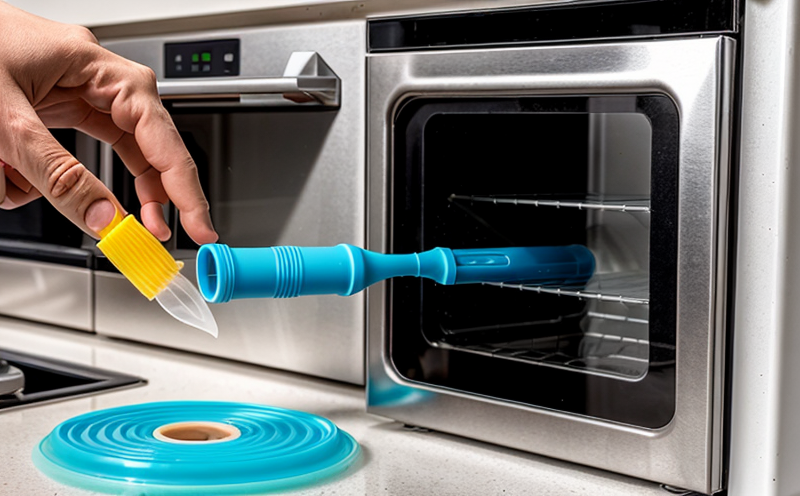ISO 16495 Compatibility Testing of Household Plastics with Chemicals
The ISO 16495 standard specifies the test methods to evaluate the compatibility between household plastics and chemicals. This is crucial in ensuring that materials used in home products do not degrade, release harmful substances, or react adversely with common household chemicals over time.
The scope of this testing primarily involves simulating real-world conditions under which a plastic component may come into contact with various chemical agents present in everyday environments such as cleaning agents, solvents, detergents, and adhesives. The objective is to assess the long-term stability and safety of these materials by subjecting them to controlled exposure scenarios.
Understanding what constitutes household plastics within this context requires a brief overview: ISO 16495 includes common thermoplastics like polyethylene (PE), polypropylene (PP), polystyrene (PS), and engineering plastics such as acrylonitrile butadiene styrene (ABS). These materials are widely used in household items ranging from food containers to toys.
The testing process itself involves precise specimen preparation. Specimens must be cut into standard dimensions, ensuring uniformity across all samples being tested simultaneously. The choice of chemical agents depends on the expected use and potential contact scenarios for the plastic components. For instance, if a component is likely to come in direct contact with food items, then food-grade chemicals would be used.
The test setup typically includes containers designed to simulate real-life exposure conditions. These setups ensure that both the temperature and duration of exposure closely mimic actual usage patterns. Specimens are then placed into these containers along with the chosen chemical agents for a specified period. After this incubation phase, the specimens undergo thorough examination.
Examination methods vary based on the specific aspects being evaluated; however, common techniques include visual inspection for signs of discoloration or cracking, measurement using precise instruments to quantify any dimensional changes, and instrumental analysis such as gas chromatography-mass spectrometry (GC-MS) to detect trace amounts of leachable substances.
Interpreting the results involves comparing observed outcomes against predefined criteria outlined in ISO 16495. Compliance indicates that the plastic remains stable under specified conditions without releasing harmful materials into its surroundings. Non-compliance suggests potential risks associated with prolonged exposure, necessitating further investigation or modification of the material formulation.
Implementing this testing process early in product development ensures compliance with relevant regulations and enhances consumer confidence by minimizing health hazards linked to improper plastic-chemical interactions.
Why It Matters
Ensuring compatibility between household plastics and chemicals is not just about meeting regulatory requirements; it’s also a matter of public safety. Exposure to certain chemicals from degraded or reactive plastic components can lead to adverse health effects, including dermatitis, respiratory issues, and even more serious conditions like cancer.
- Consumer Safety: By verifying compatibility, we protect consumers from potential hazards associated with everyday products they use without realizing the underlying risks.
- Ethical Responsibility: Demonstrating commitment to safety aligns your brand with ethical standards valued by conscientious consumers.
- Regulatory Compliance: Meeting ISO 16495 ensures adherence to international standards, which can help avoid costly non-compliance penalties and legal actions.
The importance of this testing extends beyond individual products; it contributes to broader environmental sustainability goals. Reducing the release of harmful substances into the environment reduces pollution levels and supports ecological balance.
Benefits
- Enhanced Product Safety: Ensures that household plastics do not degrade or leach harmful chemicals when exposed to common household chemicals.
- Avoidance of Legal Risks: Compliance with ISO 16495 reduces the likelihood of lawsuits and regulatory penalties related to product safety.
- Improved Brand Reputation: Demonstrating commitment to consumer safety enhances brand image and fosters customer trust.
- Innovation Opportunities: Identifies potential areas for improvement in material formulations, leading to safer and more sustainable products.
The benefits extend further when considering the broader impact on society. By prioritizing product safety early in development, manufacturers can contribute positively towards public health while also supporting environmental protection efforts.
Quality and Reliability Assurance
- Consistent Results: Rigorous adherence to ISO 16495 guarantees consistent and reliable test results across different batches of products.
- Precision Instruments: Utilization of advanced analytical instruments ensures precise measurements, contributing accurate data for evaluation.
- Reproducibility: Standardized procedures enable other labs to replicate tests yielding the same outcomes, enhancing trustworthiness.
The stringent nature of ISO 16495 promotes a culture of quality within organizations. Emphasis on these standards fosters continuous improvement in product development processes and manufacturing practices.





